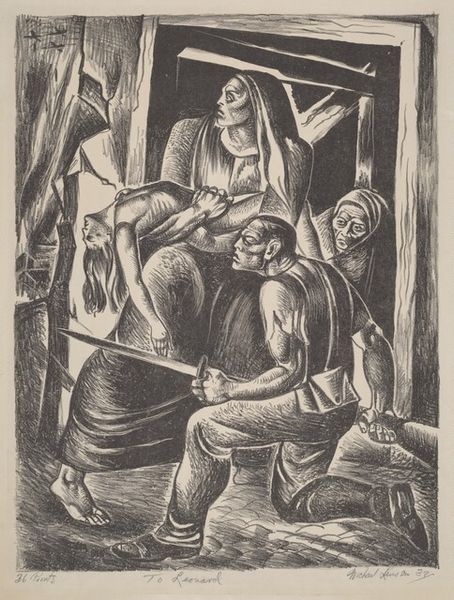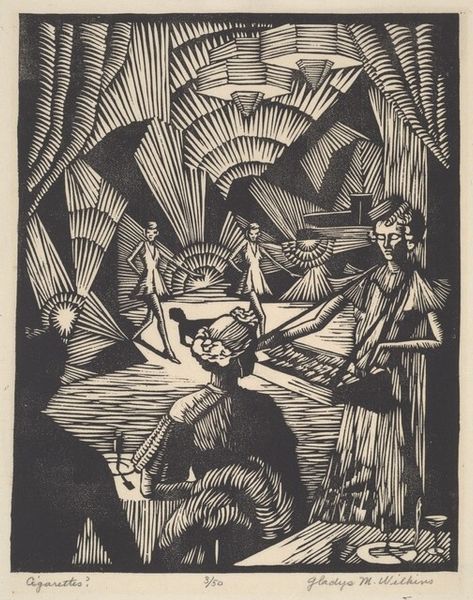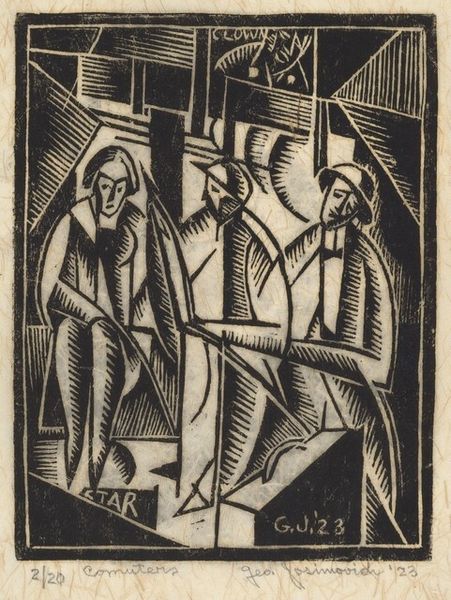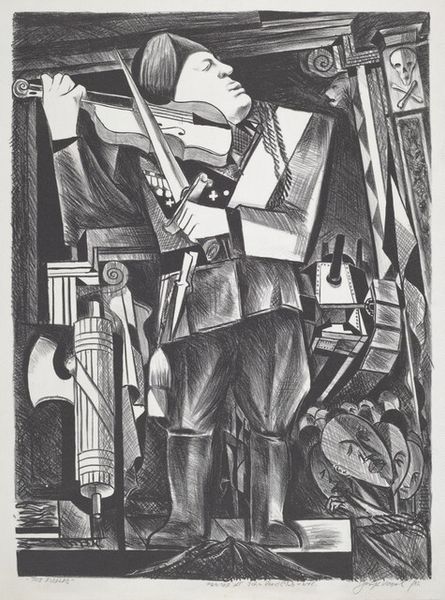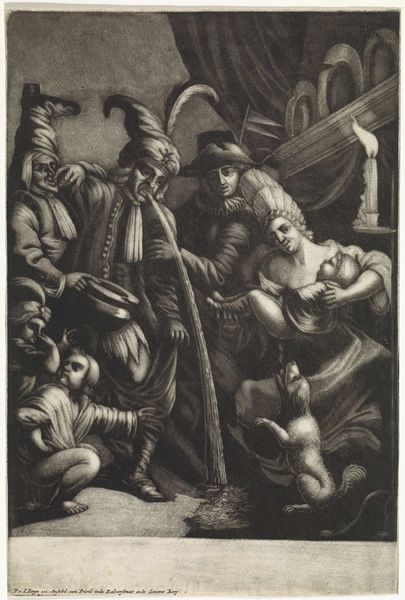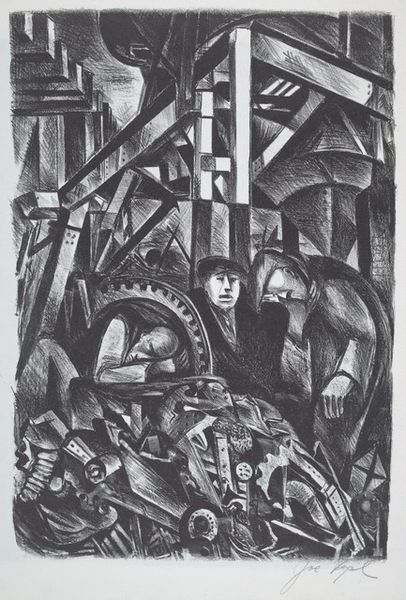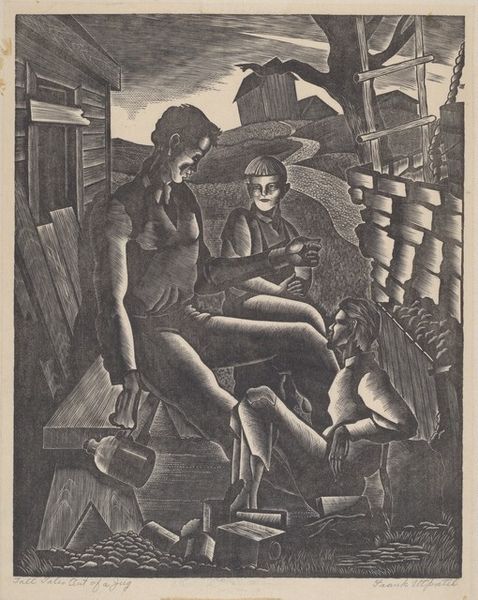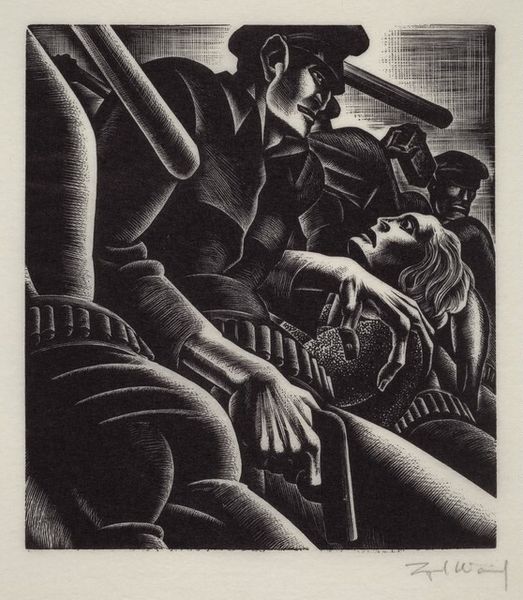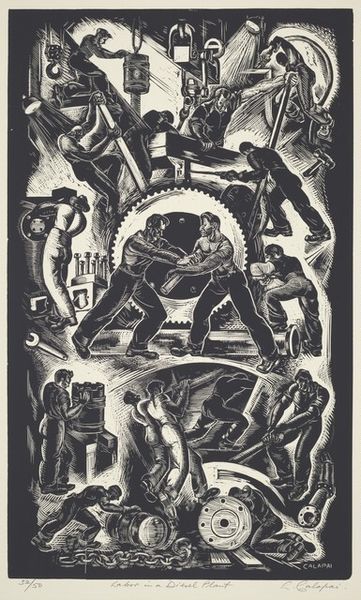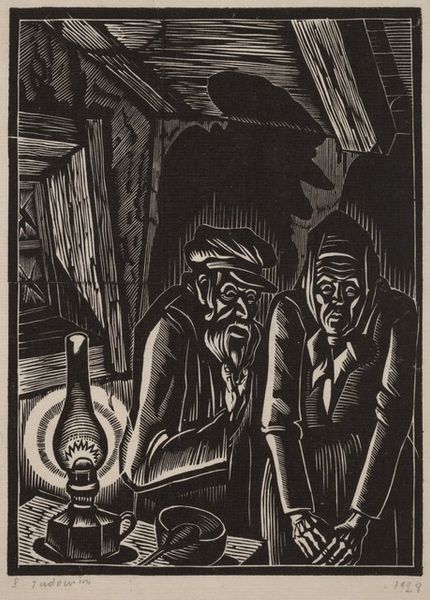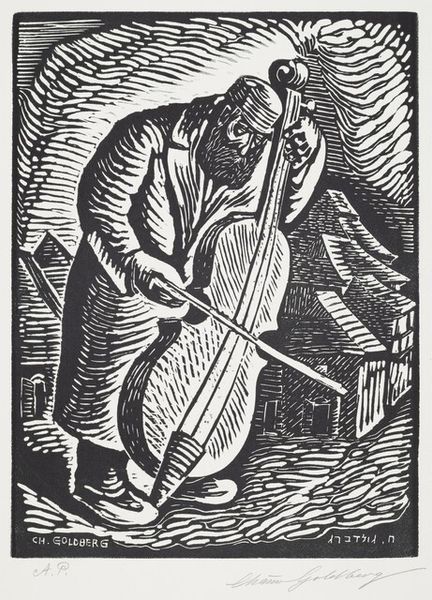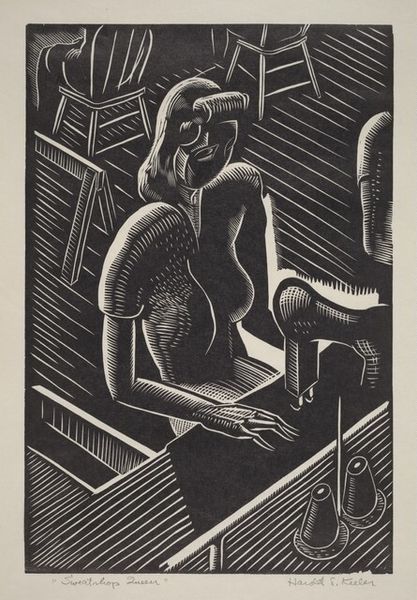
drawing, print, woodcut, engraving
#
drawing
#
narrative-art
# print
#
caricature
#
figuration
#
woodcut
#
surrealism
#
history-painting
#
engraving
Copyright: National Gallery of Art: CC0 1.0
Curator: Fritz Eichenberg's woodcut, "And David Played the Harp," created in 1955, strikes me immediately with its powerful chiaroscuro. The stark blacks and whites create a dramatic and somber mood. What's your take on this scene, Editor? Editor: The oppressive weight of the dark tones definitely grabs you. There's a clear visual hierarchy here, one that embodies power dynamics. It almost feels like a stage, presenting the dynamic between David and Saul from the Old Testament. I think Eichenberg’s medium adds a rough-hewn quality that fits this tense biblical narrative. Curator: Absolutely, there's an intentional roughness, a deliberate avoidance of polished refinement. The figures, rendered with bold lines, take on a somewhat caricature-like quality which, oddly, enhances the emotional intensity. The deep shadows that seem to swallow King Saul looming above; do they read to you as a representation of the darkness consuming him? Editor: Precisely. Saul's seated above the other figures and his posture radiates exhaustion or tormented frustration; note the sword held precariously close, as well as the drapery's suggestion of isolation and claustrophobia. The composition clearly favors David; through visual cues, David offers some respite from Saul's pain. Do you think there's a social commentary intended with this specific art style? Curator: I wonder… The expressive distortions resonate with earlier traditions of medieval woodcuts, perhaps tapping into those collective memories to amplify the story's moral gravity, adding to the psychological weight. Consider the recurring symbol of the harp, used throughout centuries as a beacon for comfort and reconciliation, and look at David offering music for healing! Editor: That historical through-line adds significant depth to the piece. By grounding the work through symbolic motifs, the artist draws viewers closer to these biblical subjects, prompting examination into the roles and positions of both ruler and servant. Ultimately, though, it really emphasizes the timeless nature of these struggles for mental well-being within imbalanced structures of power. Curator: A fascinating dance between ancient narrative and the timeless pursuit of inner peace… A powerful and resonant image that invites reflection even now. Editor: Exactly, prompting discussion around these struggles, then and now, is really invaluable.
Comments
No comments
Be the first to comment and join the conversation on the ultimate creative platform.
